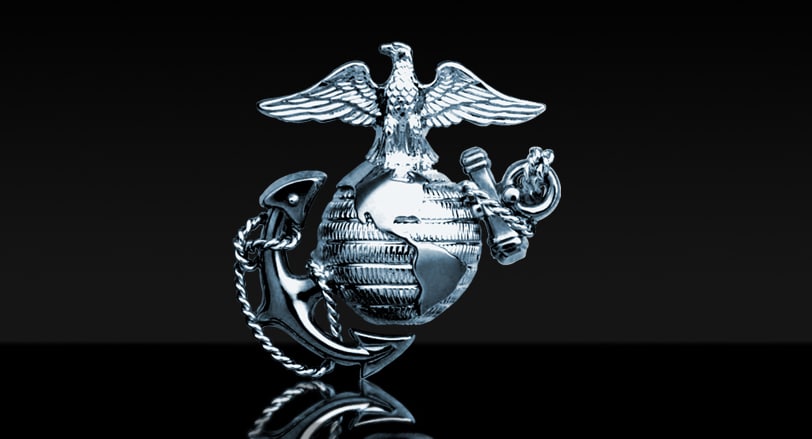Corps Leadership is a complex endeavour.
Since human beings are the most complicated things known to exist, could leadership be anything less than complex?
Humans, however, tend to address complex problems with complex solutions.
Adding complexity to complexity only increases the challenge of leadership.
To meet complex challenges, the opposite approach is required – to meet complexity with simplicity.
A recent McKinsey and Company study, Decoding Leadership: What Really Matters (Jan 2015), provides new insight on the view that simplicity beats complexity in the realm of leadership.
The study asserts that there are just a few, essential sets of skills that leaders, especially front line leaders, need to be effective.
The insights that the McKinsey study provides comes as no surprise to experienced military leaders.
They are insights that these leaders have known intuitively for generations because the hazards and urgencies of combat have proven them indispensable.
The four essentials of effective leadership:

According to the McKinsey study, four leadership behaviours account for 89% of leadership effectiveness.
They are:
- Solving problems effectively;
- Operating with a strong results orientation;
- Seeking different perspectives; and
- Supporting others.
These four behaviours seem complex, but, fundamentally, they could be achieved through the cultural adoption of simple processes and techniques.
The first behaviour, solving problems effectively, requires a process.
The second behaviour, operating with a strong results orientation, requires that such a process begins by defining what a successful solution looks like.
Then, using that process to achieve the defined outcome is improved tremendously by applying diverse perspectives and critical evaluations throughout the development and execution of the solution.
Finally, supporting others is what leaders and members of a team do in a servant role to aid the team in executing the solution they developed.
Leaders do this by creating an environment in which team members can operate according to commonly held processes that reduce conflict, increase effective communication, address unplanned and unexpected challenges, and help the team to improve continuously.
These behaviours are the essence of high performing teams that demonstrate operational excellence.
Furthermore, these behaviours could be guided by simple, highly effective processes.
What Is Flawless Execution?

Flawless Execution is a fundamental leadership model composed of inter-related processes that, when practised with discipline and commitment, provide effective guidance for leaders and their teams to achieve the four behaviours of effective leadership identified in the McKinsey study.
Derived from centuries of military experience and improved through the application of cutting-edge modern psychological research, Flawless Execution reduces the complex challenge of effective leadership to simple tools and techniques that anyone can learn and apply.
Although Flawless Execution is composed of an iterative cycle of 4 components – plan, brief, execute and debrief – the planning process addresses the first three of the four behaviours noted in the McKinsey study.
Starting with a clear, measurable, and achievable objective at the front line that is also aligned with organizational strategy and vision is fundamental to operational excellence and driving results.
The activity and, therefore, the success of the organization occurs at the front line.
Like military forces, businesses win by delivering products and services to their customers at the front line.
Businesses do not succeed nor are wars won because of senior leaders strategic far from the front line.
Although a good strategy can mean the difference between winning and losing, strategic plans do not execute themselves.
Organizations that fail to cascade long-range vision and strategy down to short-range, impaction objectives that front line teams must carry out, will ultimately short-circuit the drive for results.
Flawless Execution begins with planning, and planning begins with formulating an objective.
That is the critical activity that connects vision and strategy to the day-to-day operations front line leaders must support to achieve the organization’s vision.
Once the objective is adequately defined the Flawless Execution planning process follows five other problem-solving steps that leaders and their teams use to analyse a challenge and develop a course of action collaboratively.
In another study published by McKinsey and Company (The Case for Behavioural Strategy, March 2010) researchers demonstrated that having a good process could be as much as six times more important to positive outcomes as good analysis! Of course, both process and analysis are important.
Flawless Execution is a powerful planning model because its processes and techniques enable better analysis.
When leaders bring teams together using a common process that enables good collaboration, good analysis arises naturally from those processes.
The third leadership behaviour identified in the recent study requires leaders to seek different perspectives.
The consideration for varying perspectives is the essence of good collaboration.
In other words, planning and problem-solving require a diversity of thought.
The importance of diversity:

The Inclusion of diverse perspectives in a collaborative environment that enables varying ideas to build upon each other without crowding out essential views.
Such inclusion is essential to good planning.
It doesn’t sound very easy, but the right processes make collaboration among diverse teams much more straightforward.
Within the planning process, Flawless Execution promotes simple collaboration techniques known as Team-storming and Red Teaming to include varying perspectives repeatedly throughout the planning process.
The fourth and final effective leadership behaviour cited in the McKinsey study is for leaders to support others.
As in the Flawless Execution planning process, the execution phase also consists of procedures and techniques that enhance mutual support.
Within elite military teams, mutual support is fundamental to successful execution, whether between the leader and the lead or between teammates.
Mutual support is nurtured through clearly articulated plans with individual accountability developed in the Flawless Execution planning process.
Successful collaboration also builds greater team cohesiveness and an awareness of each other’s strengths and weaknesses.
The briefing process also aids team-mates in developing situational awareness of critical tasks where excellent mutual support can mean the difference between success and failure.
But, regularly scheduled X-Gap meetings – short, team meetings that provide a forum to identify unexpected challenges and reallocate resources during the execution phase of the Flawless Execution cycle – offer critical opportunities for leaders to close execution gaps and provide support to their teams.
Learning from failures:

Heavyweight champion boxer, Mike Tyson, once said,
Everyone has a plan until you get punched in the face.”
Similarly, military leaders often cite a centuries-old maxim that;
no plan survives first contact with the enemy.”
Why then is planning so important?
Furthermore, why are problem-solving processes so critical to high performing teams and organizational excellence?
The answer is simple:
The act of planning and problem solving as a collaborative team establishes a starting point for execution and a greater sense of team ownership of the objective that carries teams forward to success even though new and often unforeseen challenges may appear.
The Flawless Execution processes establish the common mental model that teams need to formulate a solution and act quickly with unified intent when things don’t go quite as expected.
Teams that do not possess such effective processes formulate less effective plans and stumble through execution.
The result is often failure.
The McKinsey study findings come as no surprise to experienced military leaders because the four behaviours it highlights as fundamental to effective leadership are behaviours that have been taught in military classrooms for many generations.





